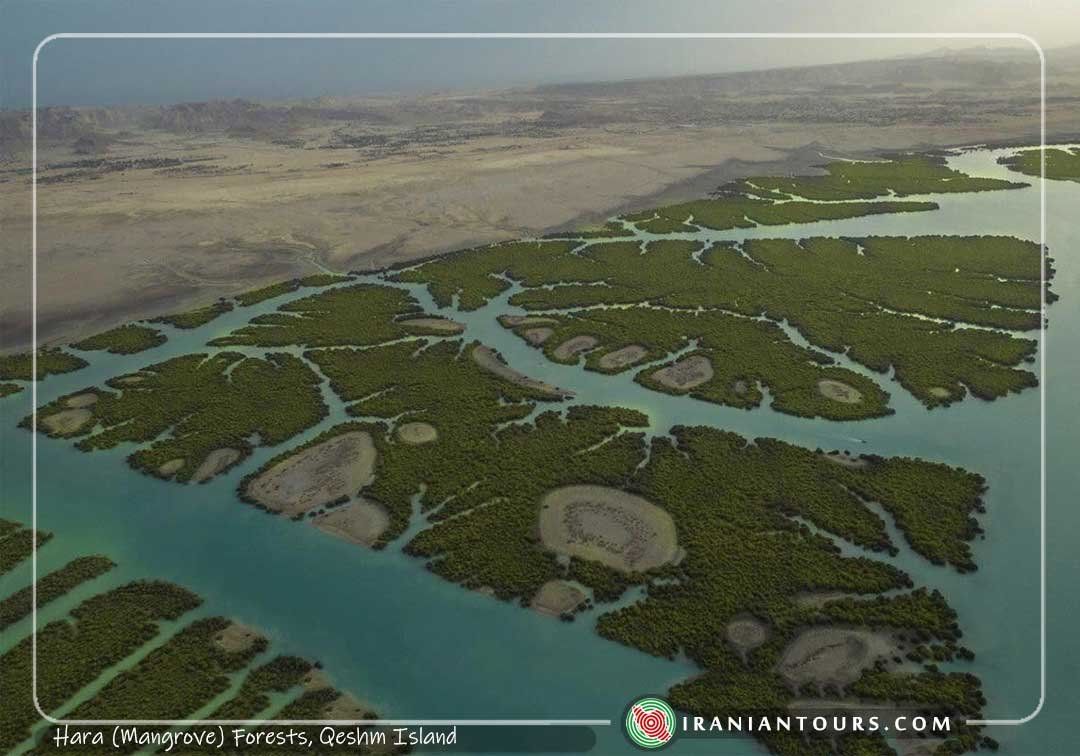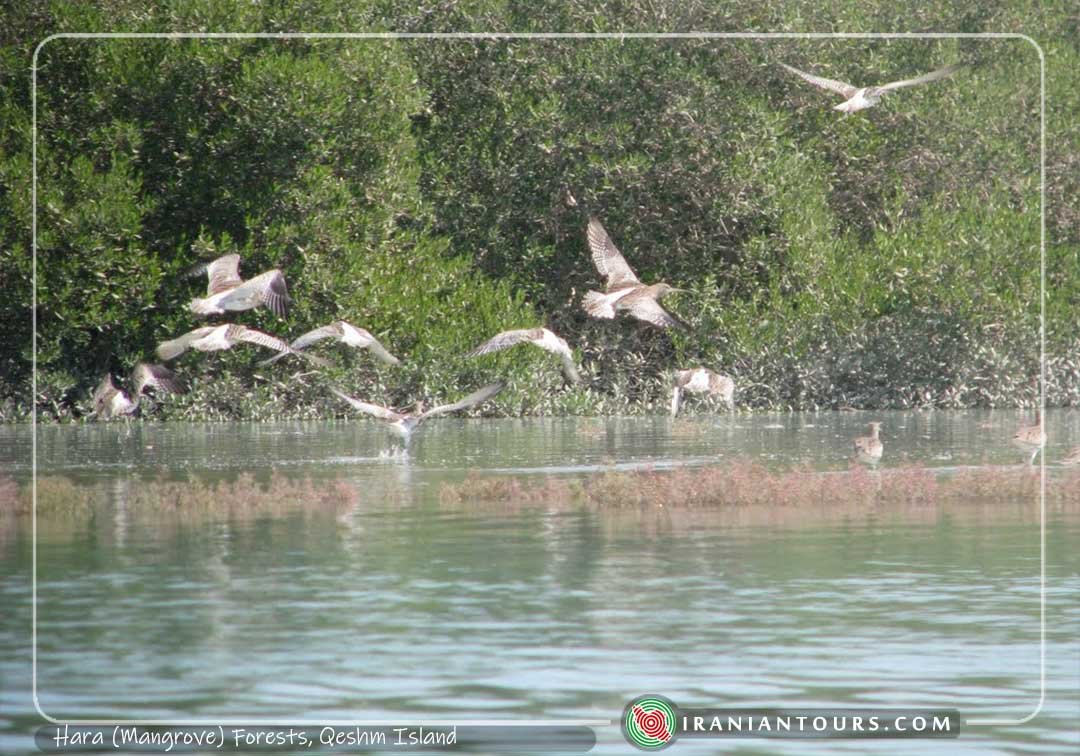Hara (Mangrove) Forests
The mangrove forests of Qeshm or Hara forests are among the wonders of Qeshm Island, located in the Strait of Khavaran, between Qeshm Island and Hormuzgan Province, in the south of Iran. These forests are not specific to Qeshm Island, as they also extend to Port of Pohl, the Hormuz Island, and Khamir Port. Covering an area of about 2,400 hectares, the Hara Forest of Qeshm is the largest forest among Iran’s 8 Hara forests. The Hara forests constitute a national protected area and an international lagoon, registered as UNESCO biosphere reserves.
Locally known as “Hara” or “Harra”, the scientific name of this mangrove plant is Avicennia Marina, after the great Iranian Physician and biologist (Abu Ali Sina or Avicenna). Some local people believe that the trees are a work of miracle created by the tears shed by Adam.
The Hara Forest has some exceptional features that exceed our common knowledge about forests with dense and congested trees. This is actually the home of salt-friendly 3 to 8 meters tall mangrove trees with external roots, which grow in tropical and sub-tropical coastal regions (rivers, estuaries, and bays). During the high tide, the trees get partially submerged in water, then reappear during low tide just for a few hours (for the exact tidal time refer to this site). All these ecological conditions also provide the best natural environment for some marine species such as reptiles, aquatic snakes, arthropods, fish species, and migratory birds including herons, flamingos, pelicans, and angler eagles.
Another wonderful fact about Hara Forest is the natural filtration system of the root of the trees which refine the saltwater and produce freshwater, making the forest independent of freshwater. This property is formed by natural selection over millions of years.
These trees play a vital role for indigenous people in producing lumber, charcoal, paper pulp, honey, artificial silk, alcohol, and sugar. They also have medical and cosmetic uses.
Boating tour is very popular among tourists who want to visit the Hara Forest. Imagine riding a boat and moving in the turquoise-blue water of the Persian Gulf. In the beginning, everything is like a normal boat ride until you are surprised by a new landscape surrounded by trees floating on the water. In some main waterways, you may be astonished by the presence of dolphins swimming among the trees. Watch cautiously not to disturb the tranquility of the place so that you may be able to take a memorable picture of these playful animals or some beautiful birds nesting on top of some trees.







